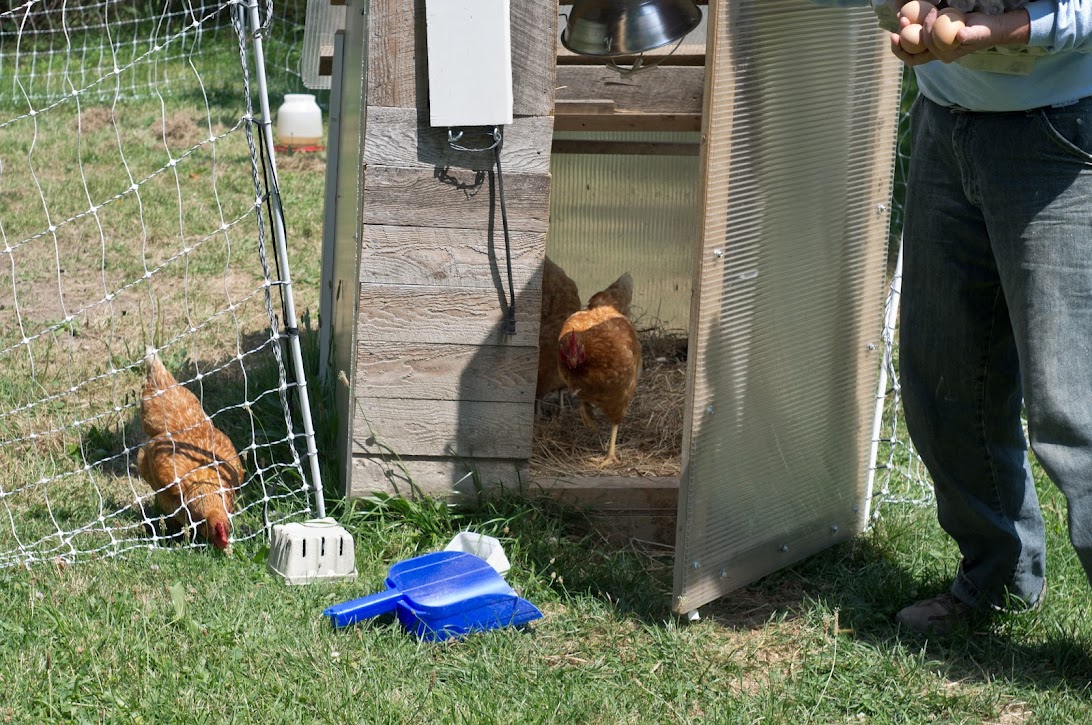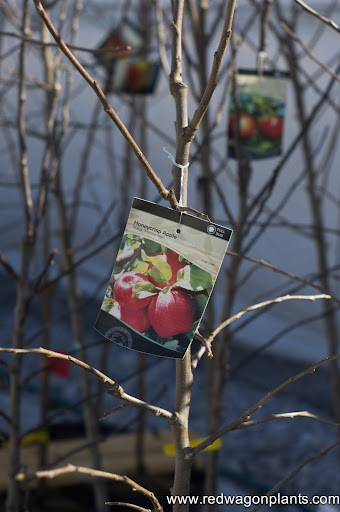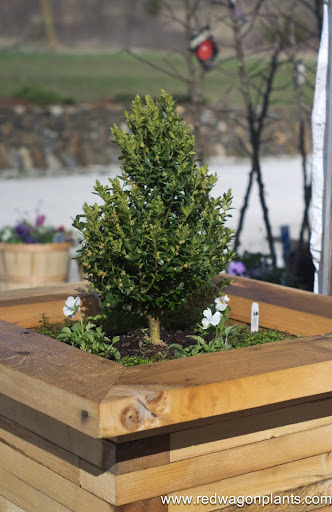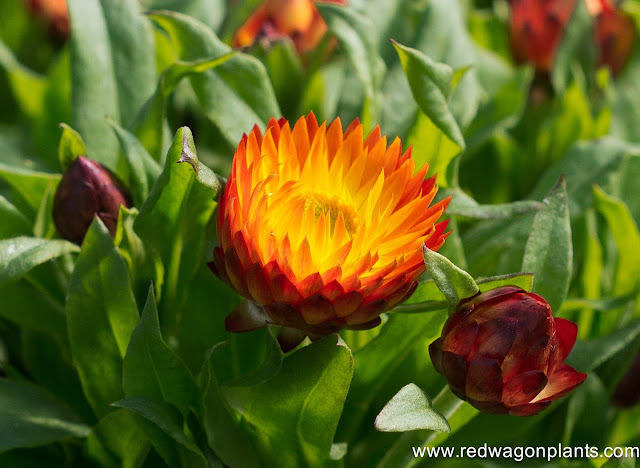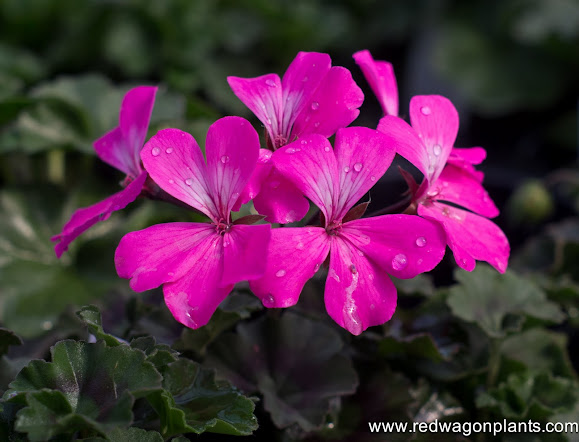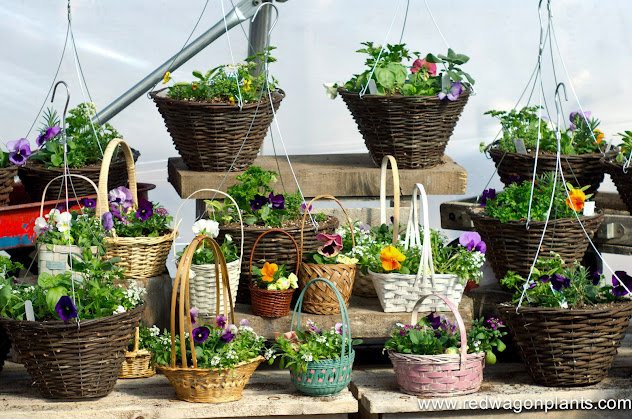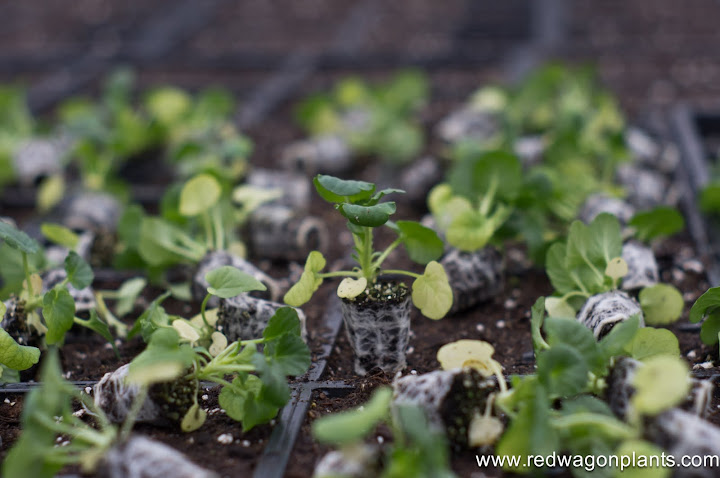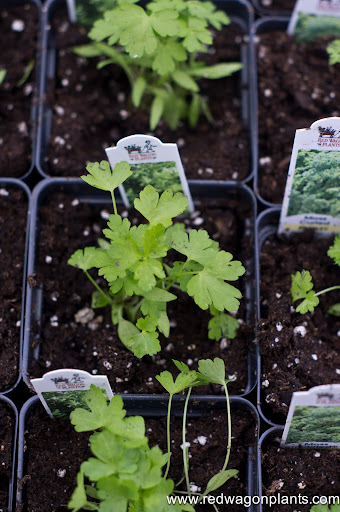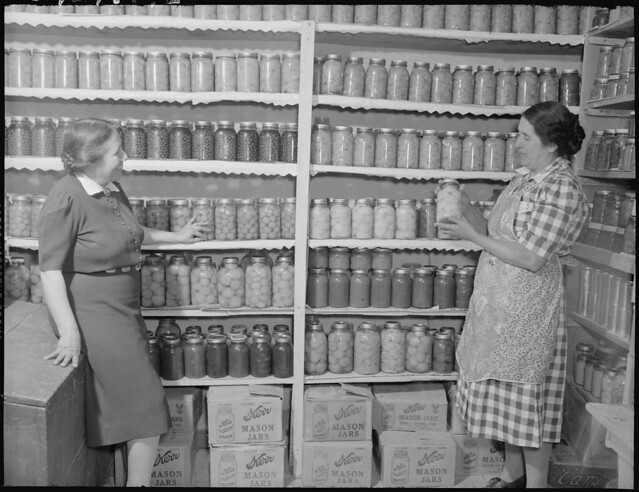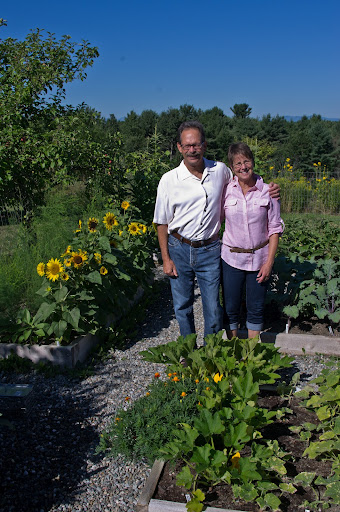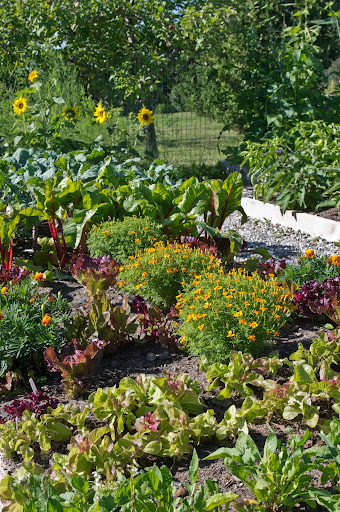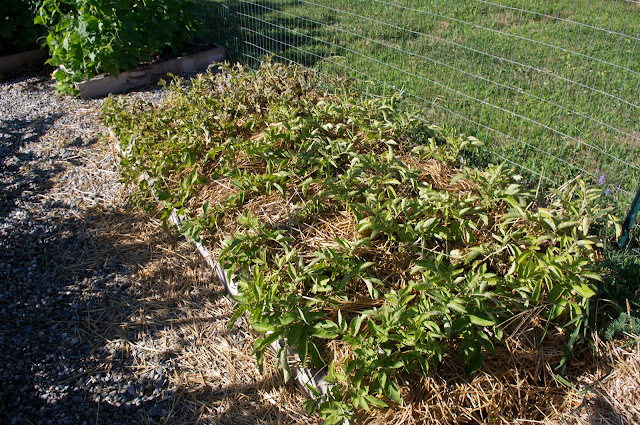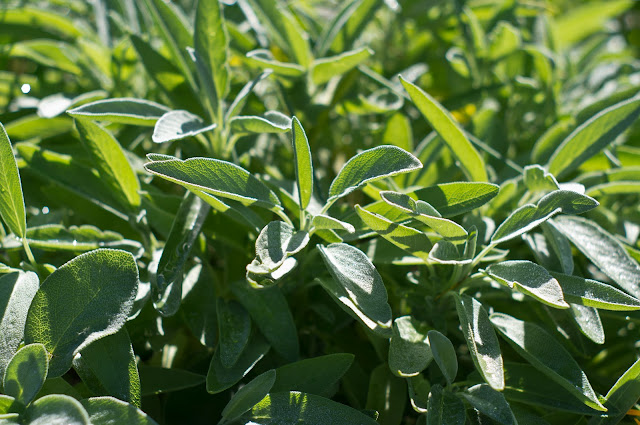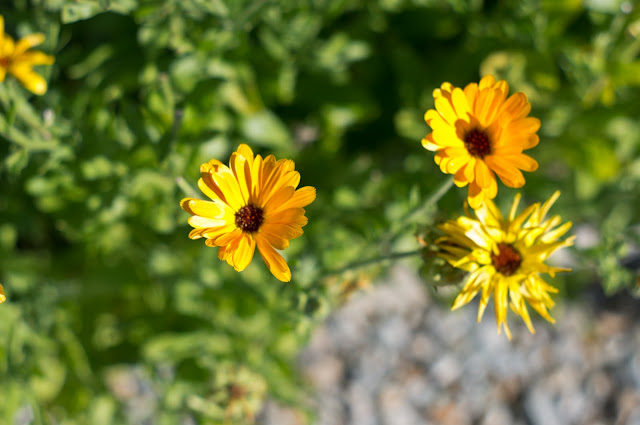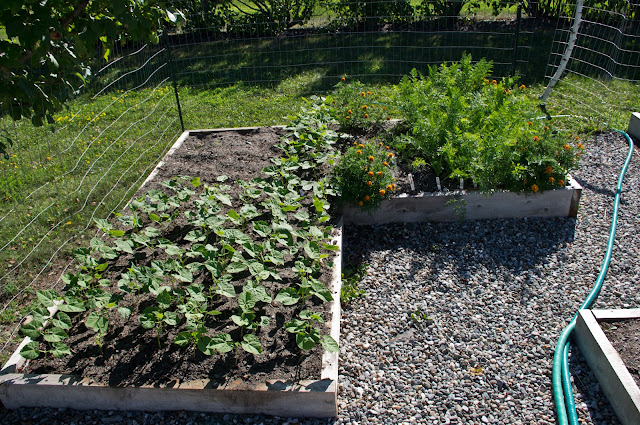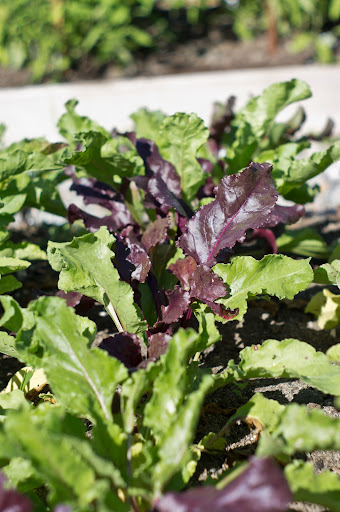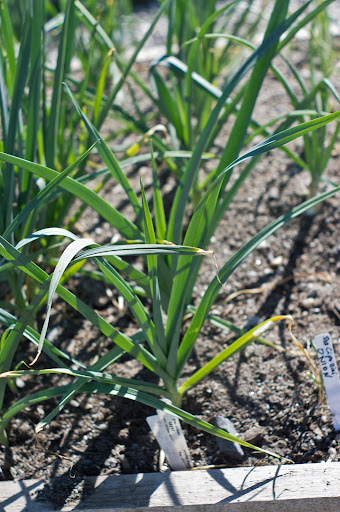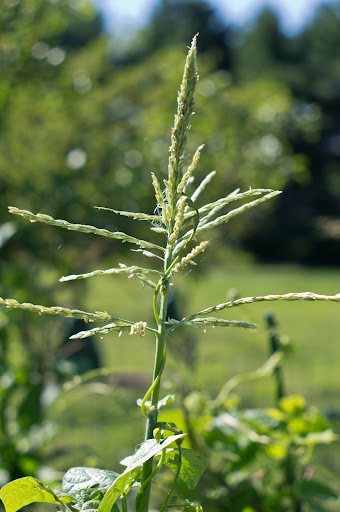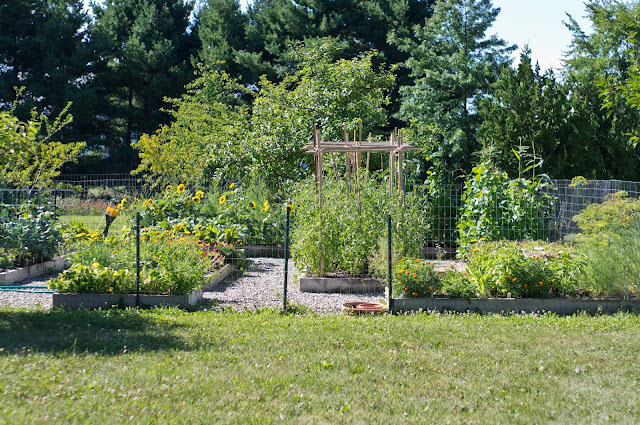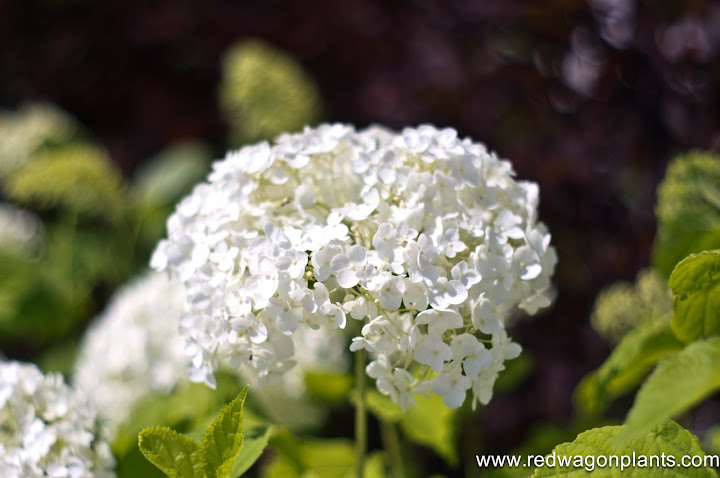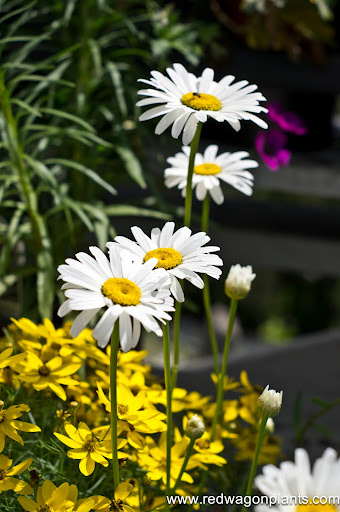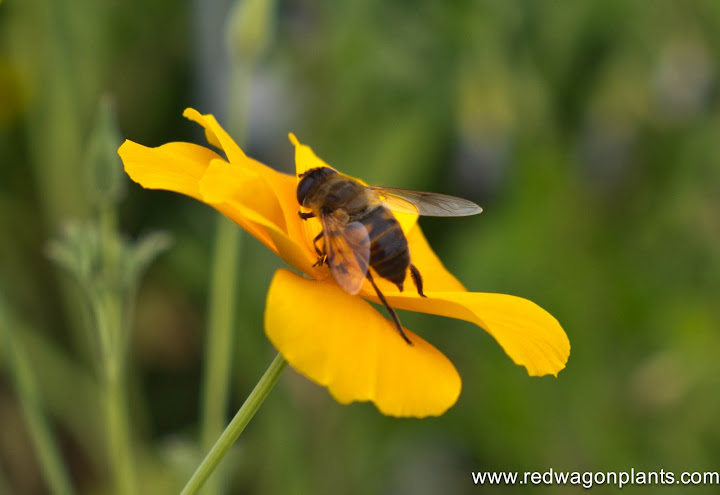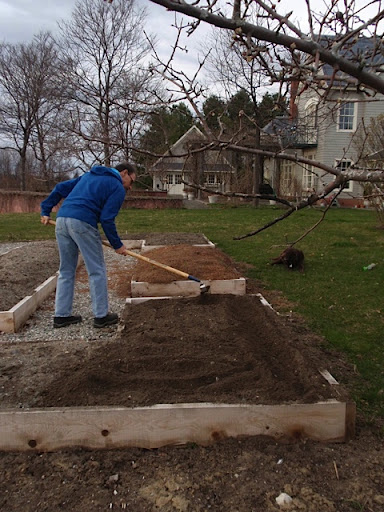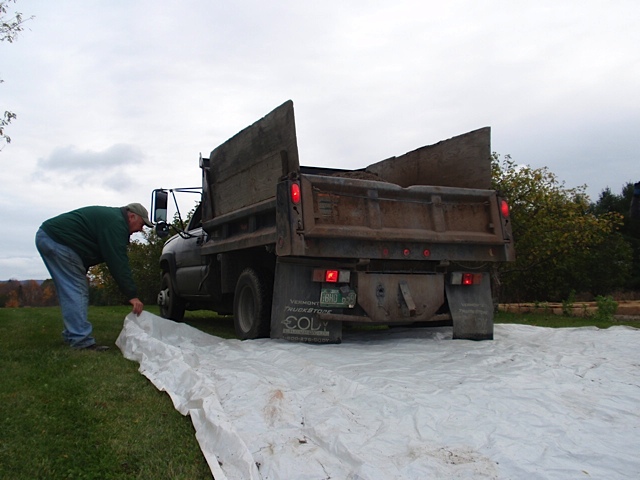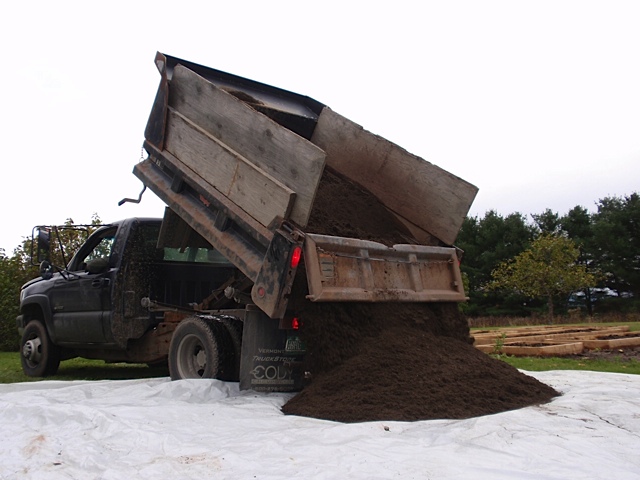Earlier this week, I went away for a total of 48 hours. This is astounding for a couple of reasons. Not only because it is May, and who do I think I am going away for a whole two days while trying to manage a greenhouse business. No, it's astounding because of the way that I came home. I landed. I arrived. No stress, no jumping into a chaos of activity, no guilt at being gone, no extra work piled up. I came home to a busy crew doing everything well and calmly. I came home to happy customers loading up on plants while wearing big smiles. I came home to a feeling that all is right in my little world. Two days off in May is hard to pull off in this line of work, but what helped me so much was that everyone who works here knew what to do, they made smart decisions and I am sure they handled problems with grace. So, thank you, crew.
I also came home to a garden. I love my garden. The moments in the garden are rare and precious for me in May, but the first thing I did when I got out of the car, was go up to the large garden above the barn and finished planting a bed of strawberries. I harvested an armful of asparagus, collected the 4 eggs the hens had laid, picked a handful of chervil and flat full of mache, and I got to work making dinner. I looked at my haul, as the sun was setting and felt embraced by the bounty.
We ate late. We ate well.
Egg Salad in Spring
Makes enough for dinner for 3 and leftovers for everyone's lunches.
- Hard boil 8 to 10 eggs. (My method is to put cold eggs and cold water in a sauce pan. Bring to a boil, covered with a lid. Let it boil one minute. Turn off the heat, but leave the pan on the burner. Set the timer for 8 minutes. Drain and run under cold water for 5 minutes.)
- Finely chop a handful of herbs - I used chervil and chives.
- Finely chop a rib or two of celery - I would have used lovage had it been big enough.
- Finely chop half a shallot or 3 scallions
- Peel the eggs and place in a shallow bowl. Cut them up with a couple of knives or a pastry cutter.
- Add all the other ingredients.
- Add enough home made mayo to moisten the whole thing.
- Stir gently.
- Season with salt and pepper to taste.
Homemade Mayonnaise
Add to the blender:
- 1 egg yolk
- 2 tablespoons lemon juice
- a dash of cayenne
- 1/4 tsp of salt
- 1 tsp of Dijon mustard or 1/2 tsp dry English mustard
- Blend for a few seconds and then very slowly drizzle in 1/2 cup of olive oil, grape seed oil, or a blend of the two. Drizzle it in a very thin stream while the blender is whirring around though the top of the blender cover. Or you can use a food processor and drizzle it in through the feeder tube. Or you can do it by hand in a bowl, with a whisk. If you do that, try to anchor the bowl by wrapping a damp towel around the base. Or get someone to help you with another set of hands to hold the bowl, or beat the eggs, or do the drizzling. Beat or blend or process until it starts to thicken up.
- Taste for salt and add a little pepper. If it is too thin, you can add more oil, still adding it in very slowly while blending.
- You can add fresh herbs to the mayo, a little crushed raw garlic, a little chopped poached or roasted garlic (mellower flavor), anchovies, spices, roasted peppers etc. (for cleanest flavors add just one of these other ingredients, not a combination.)
We ate this lovely egg salad with toasted Pain de Mie (or Pullman Bread) from Scratch Baking Company in South Portland, ME and the asparagus was steamed and cooled, served on the side, splashed with some lemon juice.
Mache Salad
Mache is also know as corn lettuce. It is a cold hardy green that germinates only in cool temperatures. We grow it in flats in the greenhouse in the winter and gorge on it from late March to late May. It is a sturdy green with a nutty flavor, and it is eaten as a whole plant, washed well under running water, and dressed lightly with hazelnut or walnut oil and a good sea salt - fleur de sel, Maldon, or sel gris. The small plants have a really interesting texture and a rich flavor that is perfect this time of year when one craves green and fresh.
To the garden, the hens, and the amazing crew at Red Wagon Plants, thanks. You make life pretty, tasty, and lovely.
-Julie
